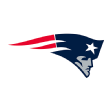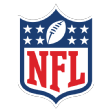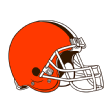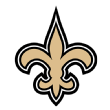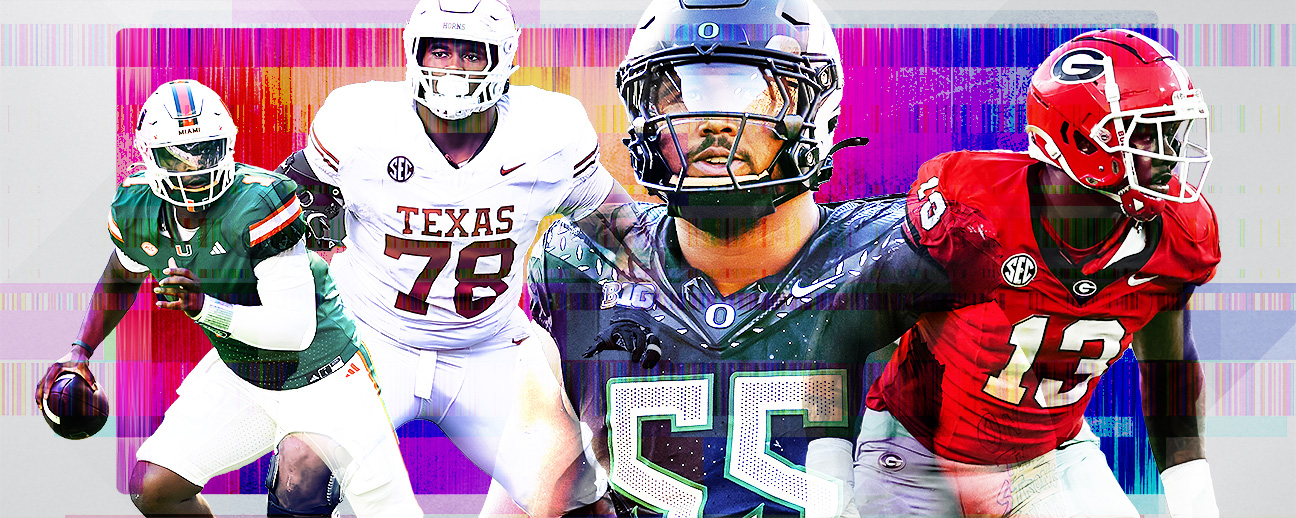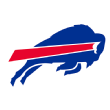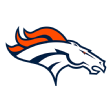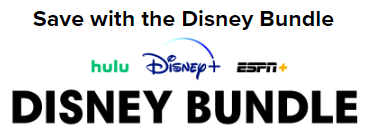New insider article
What were the best selections in each round? Which teams nailed their QB pick? Our experts have 28 different postdraft superlatives.

www.espn.com
What was your biggest takeaway from the draft?
Miller: When scouting this class, we talked a lot about how deep this defensive line group was, and that showed through all seven rounds and 257 picks. From Abdul Carter at No. 3 to Fadil Diggs at No. 254, we saw 27 edge rushers and 30 defensive tackles come off the board. This class was praised for both its top-level talent and depth, and it proved to have exactly that.
Reid: There was a lot of discussion about the quality and depth of the running backs in this class, and NFL teams agreed. There were 25 running backs drafted. While that didn't match the 31 rushers to which I had given a draftable grade, the frequency of backs being picked mirrored the depth that scouts talked about in the lead-up to this draft.
Reid: Malaki Starks, S, Baltimore Ravens (No. 27 overall). Once again, the Ravens allowed the board to fall to them and simply took the best player available. Starks doesn't play a position of immediate need, but the Ravens don't bypass talent to reach for needs at certain positions. With the recent release of Marcus Williams, Starks could start right away at free safety and be another crucial performer for an already versatile secondary.
Miller: Travis Hunter, WR/CB, Jacksonville Jaguars (No. 2). It's not just that Hunter was the No. 2 player on my board and even higher in Jordan's rankings. The aggressive mentality first-year Jags GM James Gladstone showed to move up from No. 5 to land the most electric player in the draft particularly impressed me.
Who is your guaranteed future NFL star of the class?
Miller: Abdul Carter, Edge, New York Giants (No. 3). Maybe I'm cheating by choosing the top player on my board, but I love his fit in New York thanks to his explosive ability and versatility. With defensive tackle Dexter Lawrence II and edge Brian Burns also on this defensive line, Carter won't have to deal with many double teams out of the gate.
Reid: Jahdae Barron, CB, Denver Broncos (No. 20). The Broncos' defense was already loaded, and Barron makes it that much better. His ball skills, dependability, awareness and positional versatility will help him become the ultimate player. Barron's instincts and ability to generate turnovers position him to be one of the best rookie defenders in this class.
How should the Jaguars use Travis Hunter?
Reid: I believe Hunter should be a full-time cornerback, but the Jaguars will likely deploy him as a full-time receiver who is used sparingly at corner. When paired with second-year receiver Brian Thomas Jr., Hunter gives quarterback Trevor Lawrence a dynamic duo to help unlock Liam Coen's new offense. But don't be surprised if Hunter's defensive snaps increase quickly, as Jacksonville intercepted only six passes in 2024.
Miller: Wide receiver. I've been consistent in my argument that he's a playmaker who can score points and be an elite NFL wide receiver. This pick was made to support Lawrence; Hunter should start at receiver before getting time at cornerback.
Miller: Jalon Walker, Edge, Atlanta Falcons (No. 15). Walker was my No. 5 prospect and the last blue-chip prospect in the draft, with a 94 grade on my board. Atlanta stole him when he started to slip and filled its biggest need -- speed on defense.
Reid: Jihaad Campbell, LB, Philadelphia Eagles (No. 31). Howie Roseman does it again. Campbell was my No. 11 prospect, and the Eagles were able to get him after trading up one spot and surrendering a fifth-round pick. He slipped after undergoing shoulder surgery in March. Because of that, another great prospect falls into Philadelphia's lap.
What was the best value pick in Round 2?
Reid: Donovan Ezeiruaku, Edge, Dallas Cowboys (No. 44). The Cowboys stuck to their board and took the best defensive player available. The former Boston College edge rusher finished second in the FBS with 16.5 sacks last season and will bring a pass-rush presence to a thin edge rusher group.
Miller: Will Johnson, CB, Arizona Cardinals (No. 47). Getting Johnson at this spot represented a 40-pick value based on my predraft rankings. Johnson fills the Cardinals' biggest need and has true All-Pro potential. That isn't usually found in Round 2. There are long-term injury concerns but the reward on this pick could be the highest of any in this class.
Miller: Azareye'h Thomas, CB, New York Jets (No. 73). Thomas was ranked No. 47 on my board but struggled in athletic testing in the predraft process. While it's not surprising that his stock dropped, he can win at the line of scrimmage and is an elite competitor in press coverage.
Reid: Jaylin Noel, WR, Houston Texans (No. 79). I had Noel as my 68th-ranked prospect, so this was good value. He joins Iowa State teammate Jayden Higgins (Houston's second-round pick) to give quarterback C.J. Stroud more options to throw to. Noel has dynamic ability and can fill the Tank Dell role for the Texans in 2025.
What was the best value pick in Round 4?
Reid: CJ West, DT, San Francisco 49ers (No. 113). The 49ers continued to overhaul the defensive trenches on Day 3, adding West to first-round pick Mykel Williams and second-rounder Alfred Collins. West is a quick-footed pass rusher and firm run defender who was ranked No. 76 on my board.
Miller: Dylan Sampson, RB, Cleveland Browns (No. 126). Sampson is a home run hitter who set the Tennessee single-season rushing record last season (1,491 yards) and has proved in his outstanding ability as a slasher and outside runner. This is one of the steals of the draft, as I had Sampson as my No. 64 overall prospect.
What was the best value pick in Round 5?
Miller: Marcus Mbow, G, New York Giants (No. 154). Mbow was graded as a late Round 2 or early Round 3 player on my board. He's a talented developmental offensive lineman who has the athletic skills to shine in a zone-blocking scheme. He can be a starter if he adds power.
Reid: Shedeur Sanders, QB, Browns (No. 144). Sanders falling to Round 5 was arguably the story of this draft but he represents tremendous value for the Browns as my QB2 and No. 19 prospect. He was just too good to pass up. He now enters a crowded QB room that already includes Joe Flacco and Kenny Pickett along with third-round pick Dillon Gabriel.
Reid: Devin Neal, RB, New Orleans Saints (No. 184). Neal is an absolute steal here. Alvin Kamara is still the Saints' lead back, but Neal can contribute as a runner and as a pass catcher. He is a smooth, efficient runner who can create explosive plays in multiple ways. He should play early in their rotation.
Miller: Kobe King, LB, Minnesota Vikings (No. 201). King is a run-and-chase linebacker who is tough for blockers to handle when he's crashing downhill in the run game. He was graded as a fourth-rounder on my board thanks to his between-the-tackles toughness, so the Vikings received exceptional value selecting him toward the end of Round 6.
What was the best value pick in Round 7?
Miller: Quinn Ewers, QB, Miami Dolphins (No. 231). Ewers came off the board much later than I expected. I don't want to overhype a seventh-round pick, but the Dolphins need a reliable quarterback behind Tua Tagovailoa. Ewers has proved over the past three seasons that he can win and be a reliable point guard from under center.
Reid: Brashard Smith, RB, Kansas City Chiefs (No. 228). Getting Smith here is an absolute steal. I had a fifth-round grade on him, and he was one of my favorite backs in the class. Kansas City is a perfect spot for Smith, who is the type of gadget player that Andy Reid knows how to use.
Who is your favorite prospect-to-team fit?
Reid: Omarion Hampton, RB, Los Angeles Chargers (No. 22). The Chargers continued to revamp their running back corps, adding Hampton with free agent signing Najee Harris. Hampton fits perfectly into Greg Roman's offense with his physical running style, as the 6-foot, 220-pounder is a tackle breaker with receiving upside.
Miller: Malaki Starks, S, Baltimore Ravens (No. 27). Baltimore has an elite safety in Kyle Hamilton but wanted to add another versatile back end player who can lock up deep routes and play as a deep center fielder. Starks' skill set as a deep safety and as someone who can play in the slot if needed is a perfect fit for the Ravens.
Which pick surprised you most?
Miller: Carson Schwesinger, LB, Cleveland Browns (No. 33). The Browns needed a linebacker, but not with the first pick of Round 2. Schwesinger is a really good player, but Cleveland bypassed needs at receiver, quarterback, offensive tackle and cornerback for an off-ball linebacker.
Reid: Emeka Egbuka, WR, Tampa Bay Buccaneers (No. 19). I didn't foresee GM Jason Licht addressing wide receiver early in this draft because of the depth the Bucs already have at the position, with Mike Evans, Chris Godwin and Jalen McMillan leading the way. Now, Tampa's depth chart is loaded.
What is the best QB landing spot?
Reid: Jalen Milroe to the Seattle Seahawks. Milroe needed to go to a franchise where he wouldn't be forced to play right away. He'll be able to sit behind Sam Darnold and also could be used in packaged plays to get him involved in the run game. With no pressure to start immediately, he will have a chance to hone his dynamic running ability with his considerable arm strength to develop into a productive quarterback.
Miller: Jaxson Dart to the New York Giants. I didn't love any of the quarterback fits, but Dart needed to go to a team where he could sit and learn from a proven quarterback developer. Coach Brian Daboll has that track record, and having Russell Wilson and Jameis Winston on the roster will allow Dart the time he needs to learn and grow.
What is the most questionable QB landing spot?
Miller: Dillon Gabriel, QB, Cleveland Browns (No. 93). Drafting Gabriel toward the end of Round 3 was a head-scratcher based on value and was made even more confusing when the Browns added Shedeur Sanders in Round 5. Gabriel is a smart, experienced quarterback but he's undersized (6-foot, 200 pounds) and enters a crowded QB room.
Reid: I agree with Matt on this one. I didn't understand the logic behind the Gabriel selection Friday night and still don't after having time to process it. There is a schematic fit, but the pick was premature. It seems even worse now that the Browns added Sanders, too.
Predict the number of rookie QBs who will be starting by midseason.
Reid: One. The only QB scouts loved in this class was Cam Ward. Only two were drafted in the first round and the second (Jaxson Dart) will be behind veterans Russell Wilson and Jameis Winston. I expect Dart to sit the entire season to develop, so Ward will probably be the only rookie starter at the midpoint.
Miller: Two. The NFL didn't think highly of this quarterback class, with only three selected in the top 40 picks. We shouldn't expect many rookie starters, either. Ward will start in Tennessee and Tyler Shough could in New Orleans, but otherwise these quarterbacks will be developmental projects.
Which team should have addressed -- or better addressed -- the QB position?
Miller: Pittsburgh Steelers. Pittsburgh waited until No. 185 in Round 6 before picking a quarterback, selecting Ohio State's Will Howard. Despite leading the Buckeyes to the national championship last season, Howard doesn't project as a starting-level NFL quarterback due to his limited arm strength. He has good running ability and high-end toughness, but he isn't the starting-level quarterback the Steelers need.
Reid: I am also confused by what the Steelers did at quarterback. It was the biggest hole on their roster, as Mason Rudolph is currently projected to be their starter. While there are free agent options still out there (Aaron Rodgers), I thought the Steelers would pick a quarterback before the sixth round. Howard was graded as a mid-Day 3 pick, and I don't think there's much of a chance of him playing early.
Reid: Carolina Panthers. Receiver, edge rusher and safety were their top needs entering the draft, and they addressed all of them in the first four rounds. Tetairoa McMillan was my highest-ranked receiver -- he gives Bryce Young a true WR1. Princely Umanmielen and Nic Scourton provide Carolina with two young edge rushers. Lathan Ransom is a hard-hitting safety who can produce on the back end and special teams. Jimmy Horn Jr. was one of my favorite late-round receivers and could stick on the roster as a return specialist.
Miller: Philadelphia Eagles. They played the board beautifully once again in drafting highly productive players at positions of need. And one year after winning a Super Bowl with a dominant defense, they selected five defenders to start their draft. Kyle McCord is a fun add as a developmental quarterback in Round 6, too.
